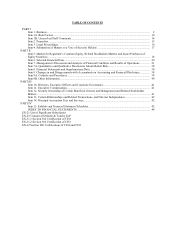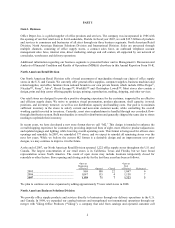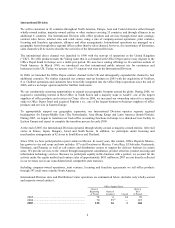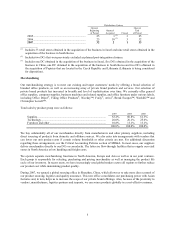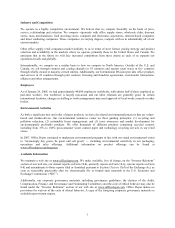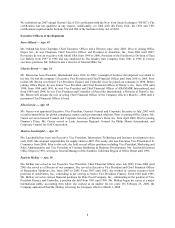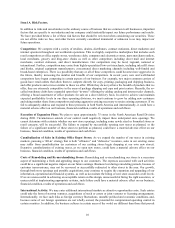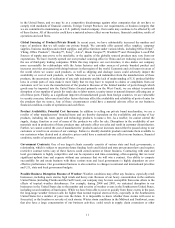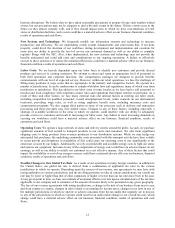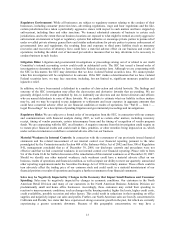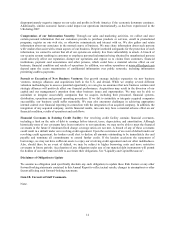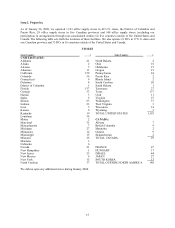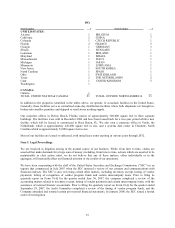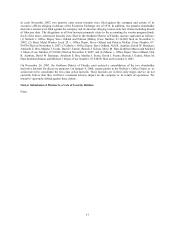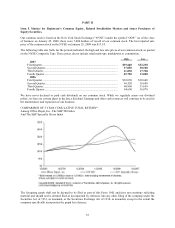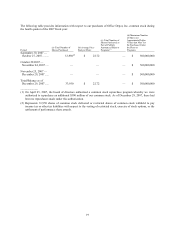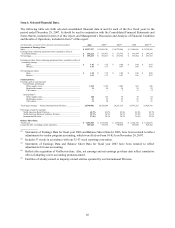Office Depot 2007 Annual Report Download - page 12
Download and view the complete annual report
Please find page 12 of the 2007 Office Depot annual report below. You can navigate through the pages in the report by either clicking on the pages listed below, or by using the keyword search tool below to find specific information within the annual report.10
Item 1A. Risk Factors.
In addition to risks and uncertainties in the ordinary course of business that are common to all businesses, important
factors that are specific to our industry and our company could materially impact our future performance and results.
We have provided below a list of these risk factors that should be reviewed when considering our securities. These
are not all the risks we face, and other factors currently considered immaterial or unknown to us may impact our
future operations.
Competition: We compete with a variety of retailers, dealers, distributors, contract stationers, direct marketers and
internet operators throughout our worldwide operations. This is a highly competitive marketplace that includes such
retail competitors as office supply stores, warehouse clubs, computer and electronics stores, mass merchant retailers,
local merchants, grocery and drug-store chains as well as other competitors including direct mail and internet
merchants, contract stationers, and direct manufacturers. Our competitors may be local, regional, national or
international. Further, competition may come from highly-specialized low-cost merchants, including ink refill stores
and kiosks, original equipment manufacturers, concentrated direct marketing channels including well-funded and
broad-based enterprises. There is a possibility that any or all of these competitors could become more aggressive in
the future, thereby increasing the number and breadth of our competitors. In recent years, new and well-funded
competitors have begun competing in certain aspects of our business. For example, two major common carriers of
goods have retail outlets that allow them to compete directly for copy, printing, packaging and shipping business,
and offer products and services similar to those we offer. While they do not yet have the breadth of products that we
offer, they are extremely competitive in the areas of package shipping and copy and print centers. Recently, the so-
called warehouse clubs have expanded upon their “in-store” offerings by adding catalog and internet sales channels,
offering a broad assortment of office products for sale on a direct delivery basis. In order to achieve and maintain
expected profitability levels in our three operating divisions, we must continue to grow by adding new customers
and taking market share from competitors and using aggressive pricing necessary to retain existing customers. If we
fail to adequately address and respond to these pressures in both North America and internationally, it could have a
material adverse effect on our business, financial condition, results of operations and cash flows.
Execution of Expansion Plans: We plan to open approximately 75 stores in the North American Retail Division
during 2008. Circumstances outside of our control could negatively impact these anticipated store openings. We
cannot determine with certainty whether our new store openings, including some newly sized or formatted stores or
retail concepts, will be successful. The failure to expand by successfully opening new stores as planned, or the
failure of a significant number of these stores to perform as planned, could have a material adverse effect on our
business, financial condition, results of operations and cash flows.
Cannibalization of Sales in Existing Office Depot Stores: As we expand the number of our stores in existing
markets, pursuing a ‘fill-in’ strategy that is both “offensive” and “defensive” in nature, sales in our existing stores
may suffer from cannibalization (as customers of our existing stores begin shopping at our own new stores).
Extensive cannibalization of existing stores, as we open new stores, could have a material adverse effect on our
business, financial condition, results of operations and cash flows.
Costs of Remodeling and Re-merchandising Stores: Remodeling and re-merchandising our stores is a necessary
aspect of maintaining a fresh and appealing image to our customers. The expenses associated with such activities
could have a significant negative impact on our future earnings. Business lost during remodeling periods, because of
customer inconvenience, may not be recovered or successfully redirected to other stores in the area. Our growth,
through both store openings and possible acquisitions, may continue to require the expansion and upgrading of our
information, operational and financial systems, as well as necessitate the hiring of new store associates at all levels.
If we are unsuccessful in achieving an acceptable return on this design, unsuccessful at hiring the right associates, or
unsuccessful at implementing appropriate systems, such failure could have a material adverse effect on our business,
financial condition, results of operations and cash flows.
International Activity: We may enter additional international markets as attractive opportunities arise. Such entries
could take the form of start-up ventures, acquisitions of stock or assets or joint ventures or licensing arrangements.
Internationally, we face such risks as foreign currency fluctuations, unstable political and economic conditions, and,
because some of our foreign operations are not wholly owned, the potential for compromised operating control in
certain countries. In addition, the business cultures in certain areas of the world are different than those that prevail



